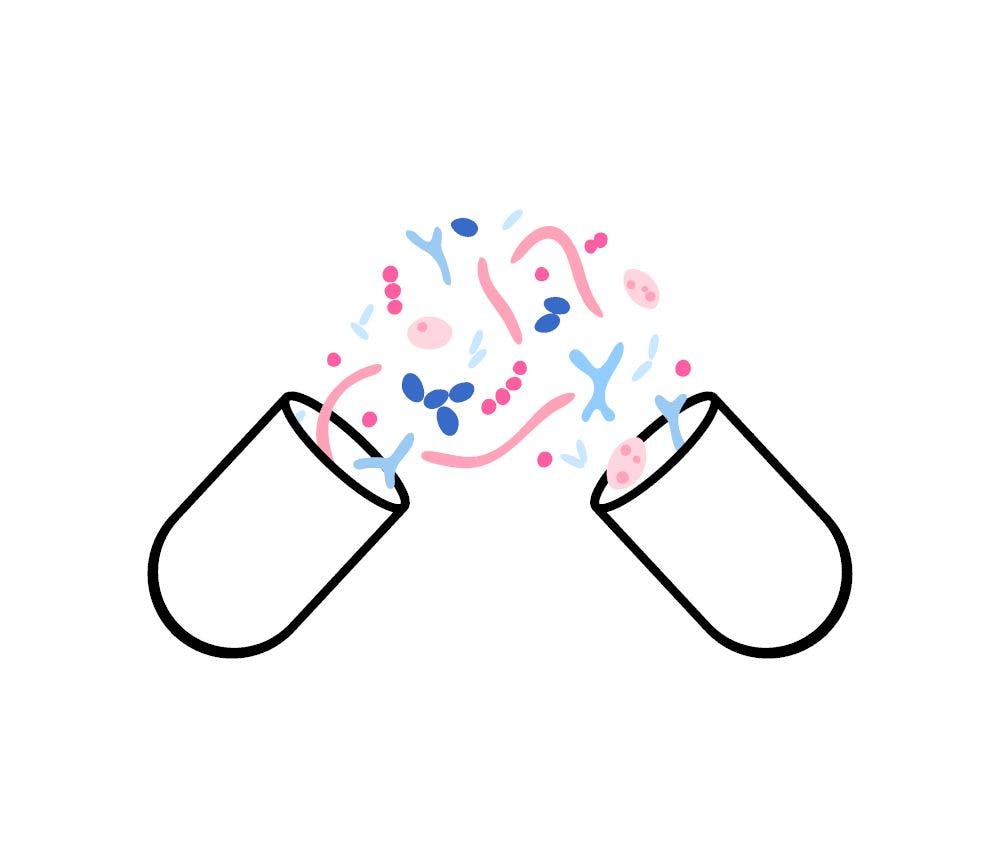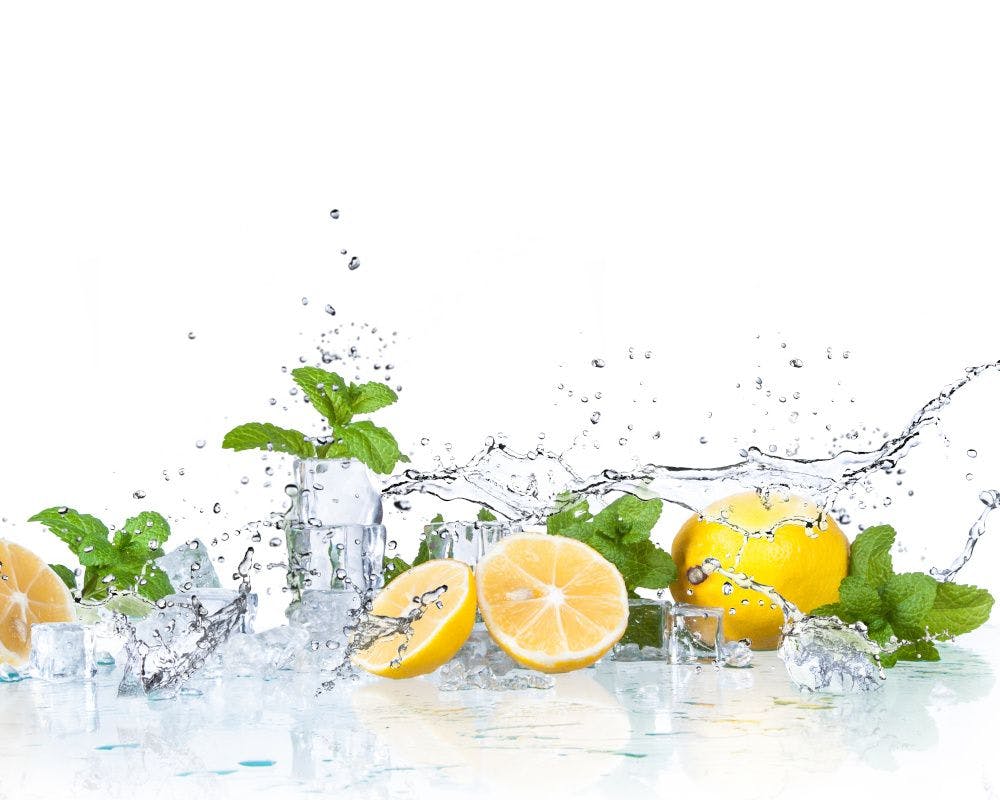As microbiome knowledge advances, so do options for using probiotics as a health tool
Probiotic supplementation has become about much more than just populating the gut with beneficial bacteria, because we have a better understanding of what happens in the gut.
Photo © Pikovit - Stock.adobe.com

Probiotics are becoming more sophisticated as ingredient manufacturers invest considerable resources into research and development of specific strains and their potential benefits. With these innovations, product manufacturers can deliver more targeted probiotic benefits across a wide range of dosage formats. Additionally, probiotics benefits, we have learned, extend beyond the gut, offering broader benefits outside of digestive health. Probiotic supplementation has become about much more than just populating the gut with beneficial bacteria, because we have a better understanding of what happens in the gut.
“The sophistication has to do with the innovation and research behind the strains,” says Stacey Smith, marketing and communications manager, NORAM, with Gnosis by Lesaffre (Marcq-en-Baroeul, France). “We take a specific probiotic strain and understand precisely what pathogen (or pathogens) it targets and where it targets in the GI tract. Of course, the goal is to populate the gut with healthy flora and crowd out the strains that wreak havoc. But now, due to more lab testing, we know what pathogenic bacteria have become opportunistic and the strains that eradicate them.”
The intricate web that is spun by the gut microbiome offers industry a great deal of opportunity when it comes to product development.
Immunity
The bacterial composition of our gut plays an immense role in our immune health. Specifically, the digestive microflora impacts “the development and maintenance of immune health through the gut immune system called the gut-associated lymphoid tissue (GALT), which represent 70% of the total immune system,” explains Lucie Lingrand, product manager, Lallemand Health Solutions (Montreal, Canada).
“This means that our gut is the first line of defense against pathogens, viruses, and other harmful microbes,” says Buffy Stahl, open innovation leader for IFF Health (New York City). “While the mechanisms are still being investigated, prolonged research has shown that orally ingested probiotics may bolster populations of healthy bacteria and improve immunity and overall health.”
Probiotics, by interacting with the gut microbiome, may offer immune health benefits in multiple ways. On a more basic level, probiotics compete with pathogens and toxins in the GI tract. “This decreases the likelihood of their proliferation, along with competing for adherence to the intestinal epithelium,” says Smith. “They also enhance mucosal barrier function and stimulate protective effects from the epithelial cells themselves. To summarize, probiotics enhance innate immunity and modulate inflammation that pathogens and toxins would have otherwise caused.”
Ultimately, a poorly balanced microbiome can make one more susceptible to infection, says Smith, and probiotics can also help balance the microbiome for better defense against pathogens. Immune health remains a major motivator for the consumption of dietary supplements. COVID-19 remains a factor in our lives, and while vaccination has helped reduce the spread of that disease, common cold and flu viruses are coming back with a vengeance as masking and social distancing become scarcer. Children are particularly vulnerable to illness as they are prone to catching/spreading disease during school and bringing it home with them. Their immune systems are also still developing; therefore, it’s important to support children’s immune health, not just for their sake but also as a first line of defense for the household.
Probiotics can be an effective way to provide children support because of their ability to be incorporated into childhood staple foods such as yogurt. In a review1 of clinical research on a probiotic formula from Lallemand called Probiokid, three studies found that the ingredient supported mucosal immune competence based on the levels of secretory immunoglobulin A (sIgA). The formula is composed of Lactobacillus helveticus Rosell-52, Bifidobacterium infantis Rosell-33, and Bifidobacterium bifidum Rosell-71 with fructooligosaccharides. According to the study’s authors, sIgA mediates humoral immunity by “regulating the balance between immune exclusion of pathogenic microorganisms and the tolerance to commensal bacteria, thereby favoring the establishment of a symbiotic relationship between the gut microbiota and the host.”
Overall, the studies, which were conducted in infants and children, found that supplementation with the probiotic increased or maintained higher sIgA levels, suggesting enhanced mucosal immunity. Two studies found that supplementation reduced the risk of common respiratory infections. One study, for example, found that in 135 children, those taking the probiotic saw a 24.7% reduction in relative risk, with 51.6% of them reporting at least one infection compared to 68.5% of children taking placebo reporting at least one infection.
Gnosis by Lesaffre recently developed a probiotic strain dedicated to immunity called LifeinU BSCU1, which is a Bacillus subtilis strain. The strain is stable for up to 24 months and has been shown in its research to also support immune health by maintaining high levels of sIgA. In an in-house human clinical study, supplementation with the strain induced significant and lasting increases of sIgA by 87% in the intestine and 45% in saliva. This is significant because sIgA levels decrease as we age, making us more vulnerable to infection with time.
Probiotic formulations can support immunity at multiple life stages, allowing for a diverse set of products that appeal to a wide range of consumers. “While it’s been long known that increasing beneficial bacteria in the gut microbiome may protect individuals from infections and harmful pathogens, it is more complex than simply increasing the number of bacteria. Specific bacterial strains can impact the body’s system in different ways, making certain probiotics better suited to some individuals more than others,” explains Stahl.
For example, IFF Health’s proprietary Bifidobacterium lactis HN019 strain is sold as Howaru Protect 55+, targeting older adults. In one study2, supplementation of the strain by subjects between 63 and 84 years of age increased the proportions of total, helper, and activated T lymphocytes and natural killer cells, with the greatest changes in immunity among subjects who had poor pretreatment immune responses. Functional foods and beverages may be a valuable dosage format for older age groups as well, considering that many already take pharmaceuticals. Pill fatigue may put them off from taking a supplement form of probiotics, but they may be willing to consume the bacteria through other means.
Brain Health
The gut-brain axis is a concept seeing growing acceptance. What we know about the interplay between the gut and our brain is that the central nervous system is affected by bacteria in the GI system. “This link is demonstrated by the fact that GI and mental conditions have been linked, such as irritable bowel syndrome (IBS) and the development of anxiety and/or depression,” says Smith.
One review of research3, for example, found that when researchers included studies that examined either symptoms with validated screening scales, such as the Hospital Anxiety and Depression Scale, or the Structured Clinical Interview for DSM, the pooled mean proportion of anxiety in subjects with inflammatory bowel disease was 19.1% compared to 9.6% in healthy controls. The mean proportion of depression in subjects with inflammatory bowel disease was 21.1% compared to 13.4% in healthy controls.
There is a hypothesis that inflammation from an imbalanced microbiome may contribute to psychiatric disorders.4 Just as it does with immunity, gut barrier integrity plays a role in mood as well. For example, short-chain fatty acids (SCFAs) such as butyrate are vital to gut barrier integrity and affect the central nervous system by altering the expression of brain-derived neurotrophic factor. Lower levels of SCFAs have been observed in people with depression.
When SCFAs are low, this could impact gut barrier integrity and lead to the translocation of bacteria and bacterial antigens into the blood stream, causing low-grade inflammation. In turn, the central nervous system maintains homeostasis by constantly responding to environmental cues transmitted by the vagus nerve, which is a major player in the microbiome-gut-brain axis communication. The vagus nerve activates its vagal anti-inflammatory response when exposed to peripheral cytokine production, leading to the production of acetylcholine to prevent tissue damage by excessive cytokine release. Research has observed alterations in gut microbiota and vagal tone in people with depression and anxiety. Probiotics such as Bifidobacterium have been shown to signal the brain through vagal pathways, and when the vagal nerve is cut, some probiotics stop showing effects on brain and behavior.
The mechanisms by which improvements in GI health from probiotics impact mood are not quite clear to us either. “We have seen improvement in mood/behavior with certain foods, so we may consider the connection between the enteric (digestive) and central nervous system is that link,” says Smith. “We may also theorize the link between gut and brain due to mood-regulating neurotransmitter production, serotonin (90% in gut), dopamine, and gamma-aminobutyric acid (GABA).”
Research is growing demonstrating the effects probiotic supplementation has on subjects’ mood, even those diagnosed with depression. While probiotics should not be used to attempt to treat or cure psychological disorders, the research does demonstrate the influence probiotics have on mental wellbeing. For example, one randomized controlled trial5 of 110 depressed subjects found that the 36 patients who took a probiotic consisting of Lactobacillus helveticus and Bifidobacterium longum experienced a significant reduction in the Beck’s Depression Inventory score, compared to subjects taking a placebo or prebiotic.
A proprietary strain from IFF, Lacticaseibacillus paracasei Lpc-37, marketed as Howaru Calm, was found in a recent study6 of 120 healthy subjects to support stress. Results showed that supplementation with the probiotic significantly reduced perceived exhaustion and fatigue as well as perceived stress.
In addition to the potential of probiotics to support mood, supplementation may also impact cognitive function in healthy populations. In one 12-week randomized, double-blind, placebo-controlled study7 of 103 subjects, supplementation with a strain of Lactobacillus plantarum not only reduced scores of stress and anxiety compared to placebo after four weeks of supplementation but also enhanced memory and cognitive traits such as social emotional cognition, verbal learning, and memory, compared to placebo. More specifically, women in the study saw significantly faster emotional processing, and men showed significantly greater verbal memory.
Other studies have shown benefits in aging populations as well. For example, a study8 of 117 older adults with mild cognitive impairment found that supplementation with a strain of Bifidobacterium breve for 12 weeks resulted in significant improvements in the subscale “immediate memory” based on the Japanese version of the Repeatable Battery for the Assessment of Neuropsychological Status (RBANS) test and total score of Mini-Mental State Examination (MMSE) in subjects with low RBANS total scores at baseline, compared to the placebo group.
Of course, the body of scientific literature in this field continues to grow, and not all results point to cognitive health benefits from probiotics. However, while more randomized controlled trials are needed, a review of research9 concluded that “Overall, the evidence in this review suggests that, for healthy young and middle-aged adults, there may be a protective effect against stress-induced declines in cognition and a potential to enhance cognitive function when processing emotional stimuli… Importantly, it should also be noted that no adverse effects on cognition were reported in any of the studies discussed here, including those in infants and children.”
Cognitive health is important to a large cross-section of consumers, from students trying to excel in their academics to aging folks who don’t want their quality of life impacted by poor memory. Probiotics are already familiar to them, and they are open to the concept of the gut-brain axis. “Consumers are preoccupied equally by their physical and mental wellbeing in a holistic approach to health,” says Lingrand. “Probiotics can reach both the gut and the brain by acting through the gut-brain axis. Consumers comprehend that overall health starts in the gut and that a balanced microbiome will have repercussion on many conditions, including immune health and mental health.”
Women’s Health
The gut is not the only place where the human body requires a healthy flora. For women, a balanced vaginal microflora can make a huge difference in quality of life because they will be less prone to chronic bacterial infections such as vaginosis and yeast infections that cause pain and discomfort throughout their lives.
“The female vaginal microflora is a rich and complex ecosystem, mainly consisting of Lactobacilli which support the vaginal environment and health. During her lifespan, every woman encounters specific health and wellbeing issues according to her lifestyle, physiology, hormonal cycles, and life stages,” explains Lingrand. “Vaginal balance is fragile, and many internal or external factors can affect this balance.”
“Changes in the gut microbiota can alter concentrations in vaginal bacteria and may lead to overgrowth of yeast in both regions and urinary tract infections,” adds Smith. “Having healthy and diverse flora can reduce that overgrowth and unwanted, razorblade-like pain.”
More specifically, an abundance of Lactobacillus bacteria produces lactic acid and acetic acid, as well as hydrogen peroxide—while also maintaining a vaginal pH of 4.5 or less, which hampers the growth of pathogenic bacteria associated with bacterial vaginosis, such as Gardnerella vaginalis, Mycoplasma hominis, Prevotella species, and Candida albicans, associated with yeast infections10. If this balance is compromised, and Lactobacillus bacteria dips, it allows for growth in pathogenic bacteria.
Diet has a profound influence on gut microbiome and, in turn, the vaginal microbiome10. The predominance of carbohydrates and simple sugars in the diet can promote the development of an abnormal vaginal flora and resulting conditions. Once again, gut barrier integrity plays an important role in preventing inflammation in the body, and a balanced diet is crucial for the suppression of pathogenic microorganisms. This means striving for a low glycemic load, low fat, and consuming foods rich in folic acid and beta carotene, calcium and betaine, as well as vitamins D, E, C, and A.
Probiotics, of course, can also play an important role in balancing vaginal flora. As mentioned earlier for immune health, probiotic bacteria compete with pathogens for nutrients and receptors in the mucosa and epithelium. The hydrogen peroxide produced by probiotics is toxic to pathogens, and bacteriocins, heterogenous chemicals mainly produced by Lactobacillus acidophilus, also inhibit the activity of pathogenic bacteria such as Staphylococcus aureus, Salmonella enteritidis, Bacillus cereus, or Pseudomonas aeruginosa.
Unfortunately, bacterial vaginosis and yeast infections are not uncommon for women and can be triggered by a variety of factors beyond diet, such as menstruation, pregnancy, and sexual partners. These infections can even make a woman more vulnerable to sexually transmitted diseases, according to the CDC, and even complicate pregnancies, resulting in preterm births or low birth weights.11 Women have a profound need for potential solutions that will reduce the risk of these infections, and the industry has the opportunity to deliver.
“Current treatment for bacterial vaginosis is antibiotic-focused, but this can harm beneficial bacteria, leading to further imbalance,” says Stahl. “Adding a natural supplement during treatment, like probiotics, may help repopulate the vagina with healthy bacteria for ideal recovery and long-term vaginal health.”
There are a number of proprietary probiotic strains that target women’s health. One scientifically validated strain is Lactobacillus plantarum Rosella from Lallemand. Research12 found that supplementation significantly improved lactobacilli colonization on vaginal epithelial cells in women with recurrent vulvovaginal candidiasis. The increased lactobacilli adhesion and was associated with improvements in clinical signs such as redness, swelling, and discharge.
Another potential ingredient is a patented strain of Saccharomyces cerevisiae, which is probiotic yeast marketed as Quatreflora by Gnosis by Lesaffre. A clinical study13 found that the probiotic, when combined with a conventional antifungal treatment, significantly reduced vaginal Candida load after four and eight weeks, while Candida levels remained stable in subjects taking the antifungal treatment alone. After eight weeks, 31% of subjects treating themselves with the antifungal and probiotic had a relapse, while 67% treating with the antifungal alone relapsed.
Similarly, a proprietary formula from IFF Health that combines Lacticaseibacillus rhamnosus HN001 and Lactobacillus acidophilus La-14 was found to significantly improve symptoms, Nugent score (which is used to diagnose bacterial vaginosis), and recurrence rate in subjects with bacterial vaginosis when combined with antibiotics.14
“Women’s health is the current biggest growth area in the probiotic supplement space,” says Stahl. “Formulators looking to meet the market demand for women’s health can consider incorporating strains into their products that are formulated exclusively for women’s health and target these specific needs.”
Beauty
The appearance of our skin can often reflect how healthy or unhealthy we may be internally. Imbalances in the microbiome can therefore not only impact how we feel internally but also how we look externally.
For example, in infants with atopic dermatitis, researchers have observed a relatively small amount of beneficial bacteria such as Bifidobacterium and Bacteroides, and higher levels of Enterobacteriaceae and many species in the genus Firmicutes.15 Certain species of Bacteroides, such as Bacteroides thetaiotaomicron, are known to have an anti-inflammatory nature. The pro-inflammatory nature of certain bacterial overgrowth can, in turn, cause inflammation in the skin. Patients with acne vulgaris, for example, are ten times more likely to have bacterial overgrowth in the small intestine. Of course, bacteria on the skin itself also plays a role in skin quality and appearance. A common feature of atopic dermatitis is an overgrowth of Staphylococcus aureus with a concomitant decline in Staphylococcus epidermidis.16
More clinical research is necessary to determine what probiotic strains most benefit skin health and why, but using our knowledge of how probiotics interact with the microbiome, we can surmise that by preventing the overgrowth of pathogenic bacteria and the pro-inflammatory response inherent to that, skin health may benefit. For its part, Lallemand has developed a specific formula that combines three probiotics (L. rhamnosus GG, L. helveticus Lafti L10, and L. paracasei Lafti L26) to maintain skin appearance by supporting firmness and texture, with vitamin C and selenium to support normal collagen formation and protect cells from oxidative stress.
This is a space that is fertile for new product development targeting different aspects of skin health and age groups. Popular nutricosmetic ingredients such as collagen and biotin are among the bestselling ingredients on the market, but innovative formulations incorporating out-of-the-box ingredients such as probiotics are bound to stand out on the shelf.
Dosage Formats
Probiotics have come a long way when you consider that capsules once had to be refrigerated to ensure the bacteria within them were still active. Now, we can find them in shelf-stable capsules as well as multiple foods and beverages, making probiotic supplementation convenient and effective.
“Provided you are purchasing from a high-quality company, [stability] is no longer an issue, and refrigeration is usually not necessary anymore unless otherwise stated. Intricate production processes have been created to ensure high yield and stability at ambient temperature and humidity for at least 24 months,” says Smith. “This requires the correct production process, formulation, and appropriate strains. In addition, we have seen the appearance of a new range of more stable probiotics compared to the classical ones. Thanks to their enhanced stability, this new range is strong enough to survive through industrial processes such as high temperature, humidity, and pressure. It is easier to formulate with these probiotics, especially for the functional food and beverage market.”
Particularly popular applications for probiotic ingredients include ready-to-drink beverages, chocolates, nutritional bars, and gummies, says Stahl. Food and beverages applications come with their own baggage, of course—namely, taste and texture. Consumers can’t benefit from the probiotics in a functional food or beverage product if they don’t want to consume it. That said, they also want healthy, low-sugar products with clean-label positioning such as plant-based or non-GMO. Consumers are no longer willing to make compromises, even if it is for their health. Because there is so much to choose from that does offer exceptional taste and texture, the functional food and beverage space may be among the most challenging spaces to compete in, but the rewards may be great.
Overall, the probiotic space offers no shortage of possibilities for product manufacturers to explore because impact of the microbiome on our health is immeasurable.
References
- Tremblay A et al. “Efficacy of a multi-strain probiotic formulation in pediatric populations: A comprehensive review of clinical studies.” Nutrients, vol. 13, no. 6 (June 1, 2021): 1908
- Gill HS et al. “Enhancement of immunity in the elderly by dietary supplementation with the probiotic Bifidobacterium lactis HN019.” American Journal of Clinical Nutrition, vol. 74, no. 6 (December 1, 2001): 833-839
- Mikocka-Walus A et al. “Controversies revisited: A systematic review of the comorbidity of depression and anxiety with inflammatory bowel diseases.” Inflammatory Bowel Disease, vol. 22, no. 3 (March 1, 2016): 752–762
- Mörkl S et al. “Probiotics and the microbiota-gut-brain axis: Focus on psychiatry.” Current Nutrition Reports, vol. 9, no. 3 (September 2020): 171-182
- Kazemi A et al. Effect of probiotic and prebiotic vs placebo on psychological outcomes in patients with major depressive disorder: A randomized clinical trial.” Clinical Nutrition, vol. 38, no. 2 (April 1, 2019): 522-528
- Patterson E et al. “Lacticaseibacillus paracasei Lpc-37® improves psychological and physiological markers of stress and anxiety in healthy adults: A randomized, double-blind, placebo-controlled and parallel clinical trial (the Sisu study).” Neurobiology of Stress. Published online November 24, 2020.
- Lew LC et al. “Probiotic Lactobacillus plantarum P8 alleviated stress and anxiety while enhancing memory and cognition in stressed adults: A randomised, double-blind, placebo-controlled study.” Clinical Nutrition, vol. 38, no. 5 (October 1, 2019): 2053-2064
- Kobayashi Y et al. “Effects of Bifidobacterium breve A1 on the cognitive function of older adults with memory complaints: A randomised, double-blind, placebo-controlled trial.” Beneficial Microbes, vol. 10, no. 5 (May 28, 2019): 511-520
- Eastwood J et al. “The effect of probiotics on cognitive function across the human lifespan: A systematic review.” Neuroscience & Behavioral Reviews, vol. 128 (September 2021): 311-327
- Mizgier M et al. The role of diet and probiotics in prevention and treatment of bacterial vaginosis and vulvo vaginal candidiasis in adolescent girls and non-pregnant women.” Ginekologia Polska, vol. 91, no. 7 (2020): 412-416
- Saraf VS et al. Vaginal microbiome: Normalcy vs. dysbiosis.” Archives of Microbiology, vol. 203, no. 7 (September 2021): 3793-3802
- Vladareanu R et al. “New evidence on oral L. plantarum P17630 product in women with history of recurrent vulvovaginal candidiasis (RVVC): A randomized double-blind placebo-controlled study.” European Review for Medical and Pharmacological Sciences, vol. 22, no. 1 (January 2018): 262-267
- Cayzeele-Decherf A et al. “Saccharomyces cerevisiae CNCM I-3856 as a natural breakthrough for vaginal health: A clinical study.” Medical Journal of Obstetrics and Gynecology, vol. 5, no. 4 (December 2017): 1112
- Russo R et al. “Evidence-based mixture containing Lactobacillus strains and lactoferrin to prevent recurrent bacterial vaginosis: A double blind, placebo controlled, randomised clinical trial.” Beneficial Microbes, vol. 10, no. 1 (February 8, 2019): 19-26
- Park DH et al. “Comparative analysis of the microbiome across the gut–skin axis in atopic dermatitis.” International Journal of Molecular Sciences, vol. 22, no. 8 (April 19, 2021): 4228
- Lunjani N et al. “Microbiome and skin biology.” Current Opinion in Allergy and Clinical Immunology, vol. 19, no. 4 (August 2019): 328-333

Prinova acquires Aplinova to further increase its footprint in Latin America
April 7th 2025Prinova has recently announced the acquisition of Brazilian ingredients distributor Aplinova, which is a provider of specialty ingredients for a range of market segments that include food, beverage, supplements, and personal care.





















